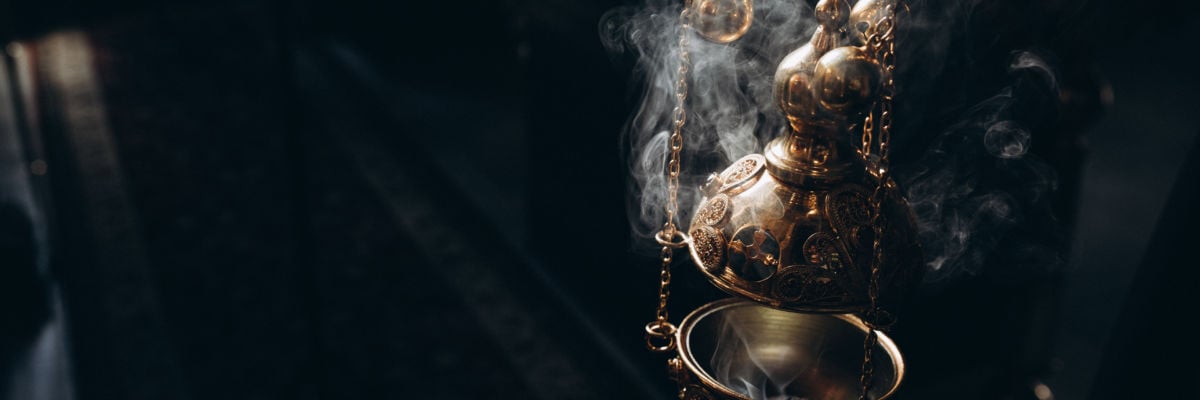
Homily for the Thirteenth Sunday in Ordinary Time, 2021
She said, “If I but touch his clothes, I shall be cured.”
Immediately her flow of blood dried up.
She felt in her body that she was healed of her affliction.
Jesus, aware at once that power had gone out from him,
turned around in the crowd and asked, “Who has touched my clothes?”
But his disciples said to Jesus,
“You see how the crowd is pressing upon you,
and yet you ask, ‘Who touched me?’”
And he looked around to see who had done it.
The woman, realizing what had happened to her,
approached in fear and trembling.
She fell down before Jesus and told him the whole truth.
He said to her, “Daughter, your faith has saved you.
Go in peace and be cured of your affliction.”-Mark 5:28-34
It’s all about power, power… that is, to do good and to drive away evil! That’s why Catholicism has its most popular image and its attractive appeal. Catholic stuff gets things done spiritually and physically, and is expressed in both body and soul, being both material and immaterial.
Powerful holy signs are the mark of Catholicism. Crucifixes, holy water, church bells, exorcisms, miraculous images, habits, rosary beads, incense, blessed candles, palms, ashes, oils, gestures, kissing, touching, bowing, genuflecting, prostrating, kneeling, veiling, blessing, consecrating, processing: these are all part of a widespread consciousness of our religion both by us and by those who do not believe along with us.
But, you might say, such human signs are common in all religions from the Adventists to the Zoroastrians—and you would be right. What is it about our signs which make us trust that they are uniquely powerful for the good and against evil?
The first foundation of this confidence is the fact of human nature, which is a composite of body and soul made in God’s image and likeness and pronounced “very good” by the God who made us. The religion of human beings is about the powers of body and soul together in the service, the worship, of God in whose image and likeness they are made. And it is for him to show us how he is to be worshipped in this manner. We know from human nature that there is no such thing as a human religion that is purely spiritual. It is also material.
Our bodily and spiritual powers were weakened by the fault of our first parents and our own subsequent imitation of their sinful disobedience. And so we were powerless to do good and avoid evil, to live actually in the image and likeness of God in which we were originally created, practicing the religion of the human race.
So God himself supplied the power for this religion, by taking to himself our human nature, body and soul, in the mystery of the Incarnation: literally, the “enfleshment” of God. Possessing a human nature, God the Son made man uses it as the instrument of the divinity in powerfully bringing about effects—getting things done—for our good. Through his sacred manhood he pours out his grace-filled gifts and overcomes defects and evils, sickness, sin, death, the devil,
He did and does all this by living his own earthly life and so meriting for us in his teaching and suffering and healing. And then, in view of his departure and final return, he established the sacraments as instruments of his bodily and spiritual humanity so that we humans could receive his power individually, from his very body and blood, and the intentions of his heart, and the fullness of his divine life.
The sacraments are thus the basic structure of our religion. Everything else leads to or from them; and the chief of the sacraments, which is the end and goal and also the source of them all, is the Most Holy Eucharist, our contact with the power of the Body and Blood of the Lord. “Power goes out from him” from this supreme source, if we offer and receive it with faith and love.
But as we have been pointing out, there are many other powerful bodily and spiritual signs that we use in our practice of our religion. These are called the “sacramentals” because they are like the sacraments established by Christ, and share in their power.
Today’s Gospel shows Christ healing the woman with the issue of blood by sending out his power as she sensibly touched the hem of his garment, believing he would thus make her whole. He had power, and his garment had power from him, and her touching of it had power, and her faith in Christ had power. There is a movement of both body and spirit, of outer and inner together. She moves from faith in Christ to touching a material object to bodily healing, and Christ moves from his spiritual will to heal her through his cloak and her touch to the healing of her body. All of these work together at once. That is power in the full, Christian, sacramental sense.
Delight, rejoice, exult, believe in the power of sacraments and sacramentals! Encourage their use, give them away, explain them. Look at them, kiss them, wear them, hold them, light them, smell them, hear them, drink them, sprinkle them, pour them, carry them, ring them. They are not magic, they are infinitely more, they are signs and instruments of the very power of the Incarnate God, and they fulfill your redeemed nature’s craving to worship him with your own body and spirit.
The Catechism of the Catholic Church tells us in paragraph 1607 that the sacraments and sacramental sanctify every event of our lives with the grace that flows from the incarnation, the cross and resurrection. We read “from this source all sacraments and sacramentals draw their power.” May this power be ours in every way we can obtain it!



